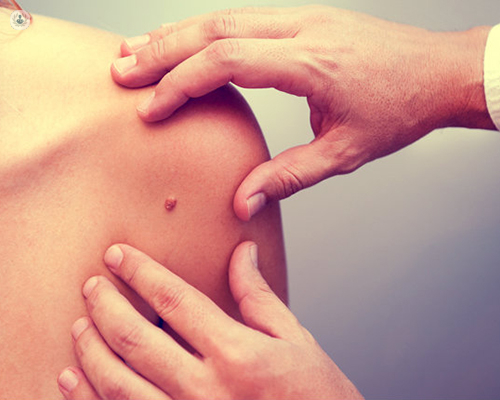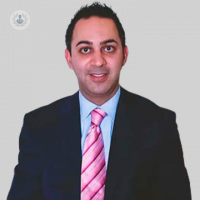A deep dive into cyst removal: part 2
Written by:In the second article of a two-part series, experienced cosmetic dermatologist Dr Simon Zoakie reveals the methods of cyst removal, how to prevent cyst recurrence, and answers your frequently asked questions.

Removal of cysts on the face, scalp, and body
Specialised surgical techniques are employed for the removal of facial and scalp cysts to minimise scarring and hair follicle damage. The meticulous nature of these procedures ensures the removal of cysts like milia without leaving visible small scars. In certain instances, medical therapy may be required before opting for surgical cyst removal, particularly for acne cysts.
For individuals with multiple scalp cysts, simultaneous treatment is a feasible approach, offering efficient and effective results.
When it comes to body cyst removal, various surgical techniques are utilised based on the cyst's size and location. These methods include removing the cyst under local anaesthesia, making a small incision to access the cyst, and ensuring the complete extraction of the cyst and its sac to prevent recurrence. The surgical techniques employed are tailored to the specific size and location of the cyst, maximising the likelihood of a favourable outcome.
In the case of infected or inflamed cysts, careful treatment is essential, often involving the management of inflammation and infection before removal. Signs of infection and inflammation include redness, swelling, pain, and discharge. Treatment options for such cysts may include draining the cyst if it's swollen or infected, with surgical removal being necessary in certain cases.
Prompt treatment of infected and inflamed cysts is crucial to prevent additional complications and alleviate associated discomfort.
How can I prevent cyst recurrence?
Efforts to prevent cyst recurrence involve thorough aftercare and a comprehensive understanding of the root causes of cyst development. By ensuring the complete removal of the cyst, including its sac, the chances of recurrence are minimised. Cleaning the cyst and the area around it at home is also crucial. You should gently cleanse the cyst with clean, warm water and then pat it dry using a clean cloth, cotton wool, or medical dressing material.
Understanding the factors that contribute to cyst formation, such as the inward migration of skin cells rather than their shedding, empowers you to take proactive measures in your daily routine. This knowledge, in conjunction with appropriate aftercare measures significantly diminishes the risk of cyst recurrence.
When should I seek medical advice for a cyst?
It is advisable to seek medical advice if a cyst becomes painful, infected, or causes discomfort. Consulting a healthcare professional ensures appropriate treatment and prevention, reducing the likelihood of complications and maximising the potential for a favourable outcome.
If a cyst does not resolve on its own or escalates in pain, obtaining medical advice becomes paramount. Professional guidance can assist in determining the optimal course of action and provide the most effective treatment for your specific situation.
Frequently Asked Questions (FAQ)
Can I remove a cyst myself?
Self-removal of a cyst is not recommended due to the difficulty involved, which could result in infection or harm to nearby nerves. Surgical removal by a professional is the best approach.
What are some common types of cysts?
Common cyst types include epidermoid, pilar, and sebaceous cysts.
What are some non-surgical cyst removal methods?
Non-surgical cyst removal methods include drainage, needle aspiration and home remedies, allowing individuals to address cysts without a surgical procedure.
How can I prevent cyst recurrence?
To prevent cyst recurrence, you should adopt appropriate aftercare practices and address any underlying factors contributing to cyst formation.
When should I seek medical advice for a cyst?
You should seek medical advice if your cyst is causing pain, infection or discomfort.
If you would like to book a consultation with Dr Zokaie, do not hesitate to do so by visiting his Top Doctors profile today.


